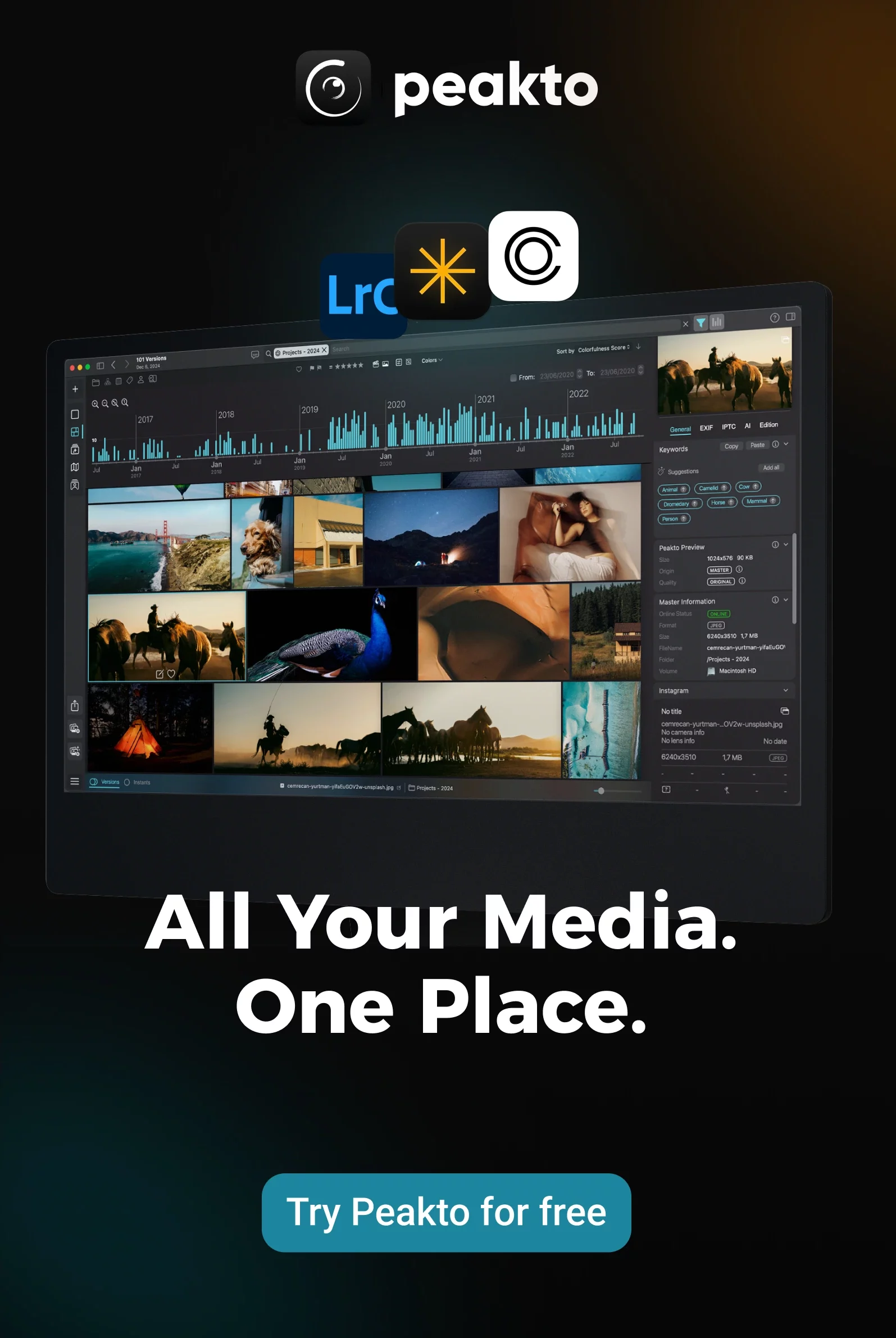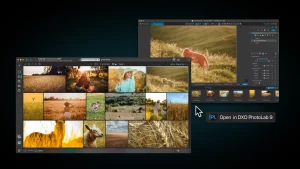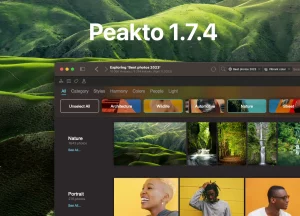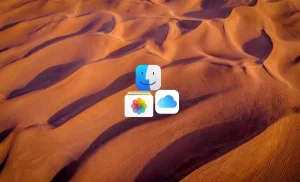If you have to scroll through endless folders for one photo of your client at that Paris rooftop bar in 2016, it’s like playing “Where’s Waldo” with your memories. If this sounds familiar, it’s time to get acquainted with the latest facial recognition software that makes the process effortless.
Thanks to recent advancements in AI photo tagging and facial recognition, managing your photo collection doesn’t have to be a chore anymore.
In our AI photo tagging software article, we explored how AI is transforming media organization. Now, we go deeper into tools that let you search your entire media collection effortlessly.
What Is Facial Indexing in Photo Software?
Facial indexing software analyzes faces in your image library and creates searchable face-based metadata. That means:
- No more remembering filenames or folders.
- Finding every photo of a person becomes instant.
- You can annotate or confirm identities across platforms.
Rather than relying on folder names or timestamps, facial indexing brings human-like memory to your digital archive. It’s especially valuable in large libraries, multi-camera shoots, or legacy backups with minimal tags.
Why Traditional Organization Methods Fall Short?
Keywords, folders, and albums still have value. But they rely on human input, which is prone to errors or omissions—especially when working at scale.
A wedding photographer might shoot 3,000 photos a weekend. An editorial photographer might have years’ worth of client sessions. Tagging all faces manually? Impossible.
That’s where indexing by face becomes essential. Unlike manual tagging or file naming, facial indexing:
- Recognizes people across different lighting, angles, and contexts.
- Groups visually similar faces into clusters.
- Updates automatically when you name someone
What Makes Photo Indexing Software Essential for Face Search?
Modern photo collections aren’t just large – they’re massive. According to a study, professional photographers manage an average of 2.5 million images throughout their careers, while casual users accumulate over 10,000 photos on their devices annually.
Traditional file naming and folder organization simply can’t keep pace with this digital tsunami. That’s where intelligent indexing comes in, creating invisible databases that map facial features to searchable metadata.
The Science Behind Face Indexing Technology
When you upload photos to face indexing software, sophisticated algorithms analyze facial geometry, creating unique mathematical signatures called “faceprints”.
These digital fingerprints enable instant recognition across your entire photo library, even when lighting conditions, angles, or expressions vary dramatically. The process happens in three stages:
- Detection: Identifying faces within images
- Encoding: Converting facial features into mathematical data
- Matching: Comparing new faces against existing faceprints
For those interested in the broader landscape of facial recognition technology, our detailed guide on program to recognize faces in pictures explores the underlying algorithms and emerging applications shaping this field.
Key Features of Photo Indexing Software to Search by Face
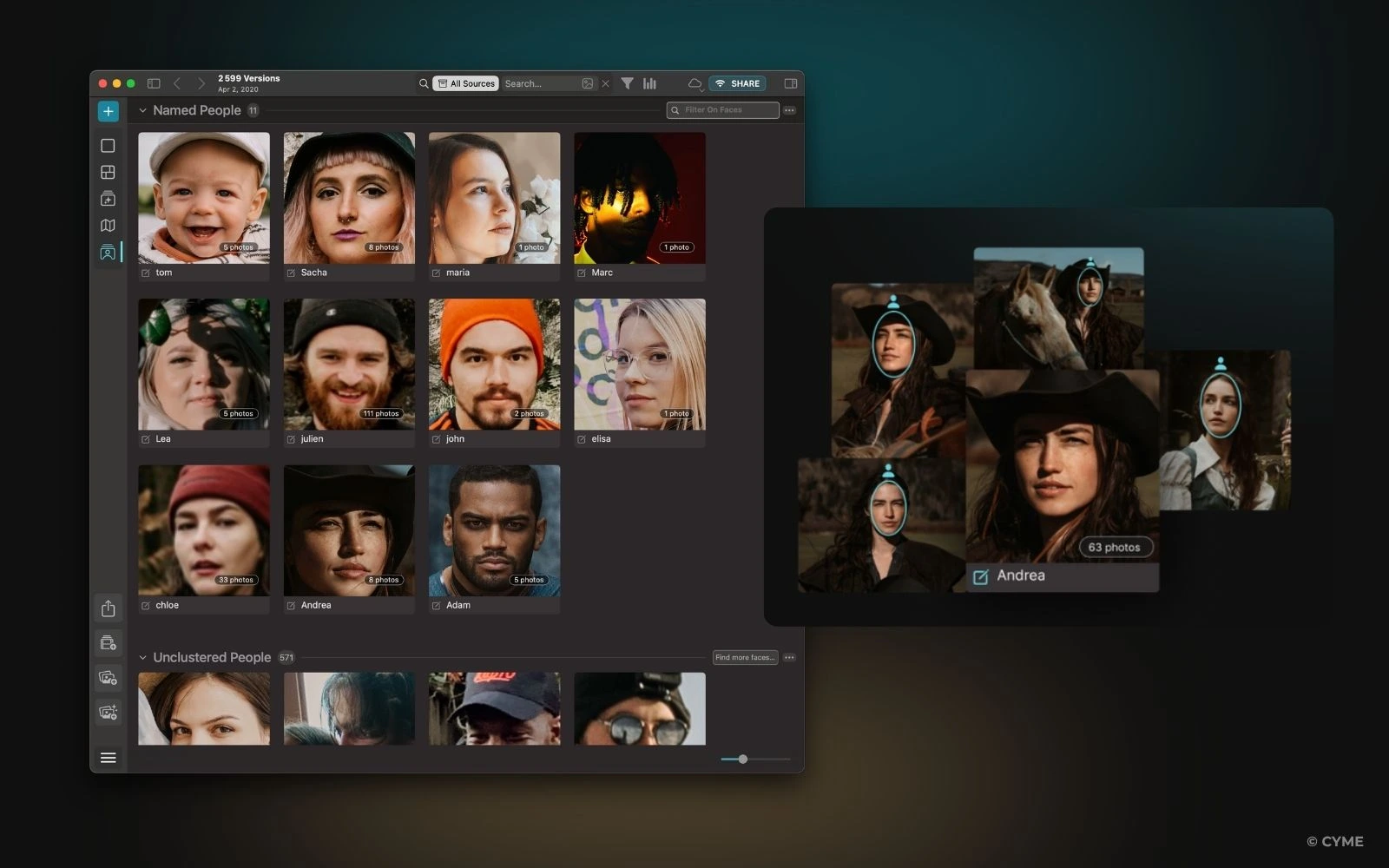
1. Face-Based Filtering
2. Cross-Catalog Search
Good facial indexing software should work across multiple photo environments. If you’re using Adobe Lightroom, Apple Photos, and local folders, you need a tool that doesn’t require import or export. And for professionals juggling different workflows, having face recognition search that works seamlessly across apps and drives is absolutely essential.
3. Intelligent Face Clustering
The best programs don’t wait for you to name every face. Instead, they group similar faces together and suggest possible matches using AI. This means less repetitive work and faster bulk annotation.
4. Local Processing & Privacy Control
5. Video Support
Photos aren’t the only media that capture faces. If you’re working with video, indexing by face in thumbnails or keyframes can be a huge advantage. Only a few tools offer this feature.
Organize and Search Images by Face: Top Software Categories
Professional Photo Manager with Face Search Solutions
For photographers and creative professionals managing extensive image libraries, robust desktop applications dominate the landscape.
- Adobe Lightroom Classic remains the industry standard, though its facial recognition can be slow with large catalogs. The software excels at integration with existing photography workflows but requires significant patience during initial indexing.
- Peakto is a macOS-exclusive application that automatically groups photos when it identifies five or more images of the same person, streamlining the naming process. Unlike competitors that require manual face confirmation, Peakto’s confidence-based grouping reduces tedious setup time while maintaining accuracy. If you want to go further, you can learn how to use face annotation in Peakto to refine tags and manage people even more efficiently.
- ACDSee Photo Studio offers excellent value for Windows users, combining powerful face indexing with comprehensive editing tools. Its facial recognition accuracy impresses, particularly with challenging lighting conditions or partial face visibility.
Consumer-Friendly Face Indexing AI Tools
Everyday users need solutions that prioritize simplicity over advanced features. Cloud-based services excel in this category, offering seamless cross-device synchronization.
- Google Photos leads the consumer market with remarkable accuracy and effortless setup. Simply upload your images, and Google’s AI automatically creates searchable people albums. The service even handles pets, making it perfect for families wanting to find photos of both human and furry family members.
- Apple Photos integrates seamlessly with iOS and macOS ecosystems, offering solid facial recognition without the privacy concerns of cloud processing. However, its face indexing occasionally misses photos, requiring manual corrections.
Privacy-First Local Solutions
Growing privacy awareness has sparked demand for software that processes facial data locally, never sending personal images to external servers.
This category connects naturally to our comprehensive guide on photo organizer with face recognition respecting privacy, which explores privacy-focused alternatives in detail.
- DigiKam stands as the premier open-source option, offering professional-grade facial recognition without subscription fees or privacy compromises. While its interface intimidates newcomers, the customization possibilities are limitless.
- Tonfotos provides a middle-ground approach, combining local processing with user-friendly interfaces. This Windows and Mac application performs all facial analysis on your device. That said, it lacks some of the advanced face clustering and filtering features seen in more AI-driven tools, which may limit its scalability for pro-level libraries.
- Peakto excels in the privacy-conscious category by processing all facial recognition entirely on your Mac. Beyond its intelligent grouping system, Peakto never uploads your photos or facial data to external servers, making it ideal for photographers who demand both sophisticated AI capabilities and complete data control.
Why Peakto Stands Out as a Photo Indexing Software

While other tools have their strengths, when it comes to bridging environments—folders, apps, and workflows—they fall short. Peakto addresses the core challenge: unifying face search across fragmented photo environments. While others operate in silos, Peakto brings all your images—from Apple Photos to Lightroom to Finder folders—into a single, indexed view.
Its face-based search is fast, visual, and surprisingly intuitive. You can scroll through a grid of automatically grouped faces, assign names once, and watch Peakto annotate your library in seconds. Filters allow you to narrow down by person, app source, folder path, or date.
Want to find that one candid of a model smiling backstage from 2021—without opening every folder? Done.
Most importantly, it all runs locally, ensuring your client work stays secure and confidential. No files are uploaded. No faces are sent to the cloud.
Event Photographer Needing Speed
Let’s say you’re a photographer who just shot a multi-day corporate conference. You’ve imported 5,000 photos into Lightroom and another 2,000 from a second shooter into Apple Photos.
Now the client wants “every image featuring their CEO on stage or in group settings”.
Instead of opening both apps, tagging manually, and exporting by guesswork, you open Peakto. It identifies the CEO’s face, shows you every shot from both platforms, and even groups moments where he appears with others. You filter by location and timestamp, and export your final gallery.
Task completed in 10 minutes, not hours.
The Business Benefits of Face-Based Indexing
In a report by McKinsey, companies leveraging AI-driven tools in their workflows reported productivity improvements of up to 20% and significantly reduced time spent on content retrieval and review processes. For working professionals, indexing photos software is more than a luxury—it’s a revenue enabler.
- You can respond faster to client requests.
- Archive your work with searchable intelligence
- Avoid re-editing or reshooting lost file
- When your media is discoverable, your time is saved, your quality of delivery improves, and your client relationships strengthen.
Index Smarter, Work Faster—Face Recognition Makes the Difference
We’re in 2025. Manual photo sorting is not just outdated—it’s inefficient.
A photo organizer with facial recognition is now essential for photographers, creators, and teams handling visual media at scale. It enables faster workflows, smarter libraries, and a better experience for clients and collaborators alike.
While multiple platforms offer facial recognition, Peakto’s edge lies in its ability to bridge ecosystems. It brings cross-catalog face search, AI clustering, and private offline indexing—all without file duplication.
When the face is the anchor and not the filename, creative work becomes faster, smarter, and more human.





